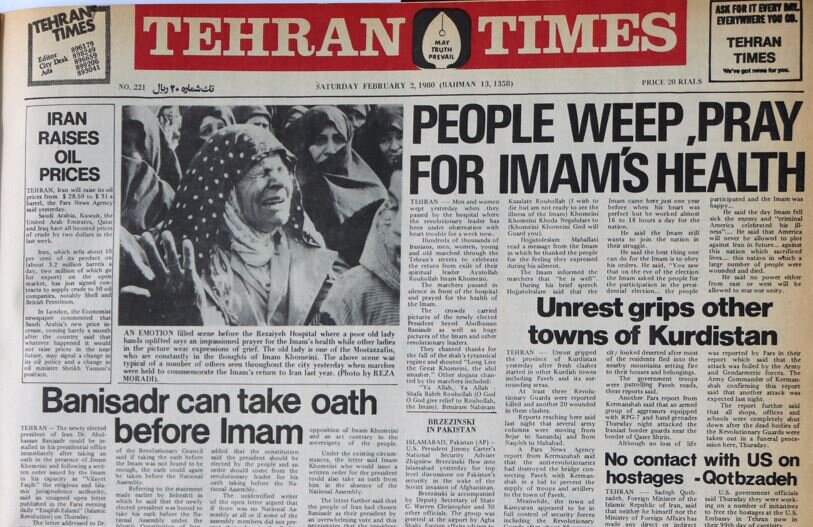Deep dive into Tehran Times archive

TEHRAN- The Tehran Times, which began publishing in 1979, was founded during the early years of Iran’s quest for independence.
The English-language daily newspaper has been regarded by Mohammad Beheshti, one of the most influential and renowned figures of the Islamic Republic, as the “voice of the Islamic Revolution”.
Such a label, made the staff at the Tehran Times feel an even bigger responsibility to accurately and effectively report the daily occurrences in the country and become a helping hand in the consolidation and entrenchment of the new people-led governance.
For that, the paper needed to follow the events with a keen eye and try to draw attention to issues that were essential to be addressed. That’s why with the approaching of the 10-day Fajr occasion, the period from February 1st (Bahman 12th) to February 11th (Bahman 22nd) of 1977 during which Imam Khomeini returned to Iran after 15 years of exile, we have decided to take a look at how the Tehran Times commemorated the historic period in February of 1980.
Such an act would help us understand where we stand today, and give us a clearer vision of the hardships Iranians had to endure to be able to celebrate the 45th anniversary of the victory of the Islamic Revolution today. February 1st in the year 1980 was a Friday. The Tehran Times’s covering of the Fajr decade began a day later, on Saturday.
Saturday, February 2, 1980
Worried Iranians pray for Imam’s health
Less than a year after the establishment of the Islamic republic, people found themselves worried about the future of their national movement, as they found out that the central figure of the revolution, the one who had guided the entire nation towards their new-found freedom, had become bedridden.
“Men and women wept Yesterday when they passed by the hospital where the revolutionary leader has been under observation with heart trouble for a week now. Iranians, men, women, young, and old marched through Tehran’s streets…the marchers paused in silence in front of the hospital and prayed for the health of the Imam,” the Tehran Times wrote at the time. Luckily for the demonstrators, the esteemed leader ended up regaining his health and proceeded to successfully guide the country through different challenges for the next ten years.
Anti-Iran Kurdish groups double down on violence
The edition published on February 2nd of the year 1980 touched on an extremely worrisome issue that continues to grapple Iran to this day. Anti-Iran Kurdish groups, who had grown a strong bond with the Israeli regime even before the Islamic Revolution, had attacked new towns in Iran’s Kurdistan region, killing innocent civilians as well as border guards and other soldiers.
The Tehran Times reported: “At least 3 soldiers were reported killed and another 20 wounded in the clashes… Anti-revolutionaries have destroyed the bridge connecting Paveh with Kermanshah in a bid to prevent the supply of troops and artillery to the town of Paveh”.
Iran managed to contain terrorist groups inside Iran’s Kurdistan province by either liquidating their members or causing them to flee to Iraq. The country’s security, however, is still under threat from the anti-Iran factions who have grown even closer to Israel and essentially become Mossad agents.
The day of Imam Khomeini’s return
The Fajr celebrations begin on February 1 every year as that’s the day Imam Khomeini returned to Iran from his long exile 45 years ago. The Tehran Times, a year after the return, published a poem by an Indian author to depict the atmosphere among the people that had gathered in Tehran’s Mehrabad airport to catch a glimpse of the Imam’s first moments on Iranian soil:
“…
To get a glimpse of the Father of the Nation
For hours they had stood quiet and patient.
No longer can their love remain pent-up
The spirit of Devotion was overspilling the cup,
And there as I saw Him tears in my eyes did arise
Trade could I not my place with Paradise,
Before I realized He had come and gone
History rejoiced as a Leader was born.
Stunned and happy as homewards my steps I did trace
I thanked the Creator of the human race
Willing it for me to be here that day
So when I return to India I can proudly say
‘My eyes have seen that Blessed Face
Glory to God and peace to the Iranian race’”
